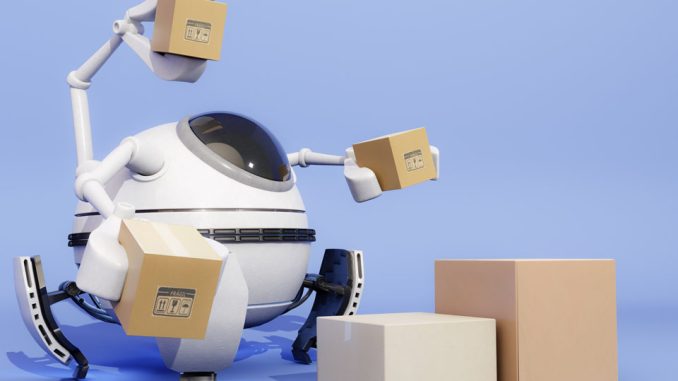
Chatbots are changing every business, from online shopping to healthcare. This blog post will discuss how robots change the retail business.
How are robots affecting the shopping industry?
According to a report by eMarketer, 67% of millennials who use the internet buy goods and services from a brand that uses robot technology. There is much competition in the retail industry today. Each store wants to be the best place for people to go.
The only way to reach that goal is to make things better for customers. Since there was an outbreak, it has been even harder. So, stores turn to robots to stay honest and help their clients more humanely. Some of the most important things that robots do well are:
Save lots of time
With the help of robots, the customer doesn’t have to wait as long for help, and the customer can get help right away, at any time and place. Also, companies can keep their customers if they do more to make them happy. The team that helps customers can work on more important jobs. So, robots save users and businesses both money and time. Chatbots make it so you don’t waste time looking for answers on every website.
Cost-Effective Ways
The shopping business can save a lot of money with the help of chatbots. Because robots can solve any customer’s problems, companies can save money on labor costs because they don’t have to hire customer service representatives to answer easy questions.
With the help of robots, customer service stays at its best. Also, the people working in customer service can learn new skills and focus on more useful tasks to improve the customer experience and bring in more money for the business.
Customer Happiness
The biggest strength of the retail business is that it regularly provides services to customers, which keeps the value of its brands high. Chatbots never fail to make customers happy; in fact, they always raise the rate of customer involvement. When Aspect asked customers to rate their experiences with robot technology, the results were:
- Friendliness (65%)
- Ease of Use (65%)
- Speed (62%)
- The success of Interaction (55%)
- Quality (55%)
Another thing about retail is that people always try to keep customers interested and happy. Chatbots give customers what they want and meet their standards right away. This makes them the best technology for customer service.
Also, they offer the best support in their class, a quick reaction, the right solution, and, most importantly, help 24/7, which human workers can’t do. In every part of the shopping business, chatbots are very helpful. Chatbot technology is the key to uniquely managing clients and giving customers high-value experiences.
On the other hand, robots help stores compete with Google and Amazon. This is the near future of internet shopping, where everything is done digitally through robots that follow the rules and use AI. The robots can read messages, instantly look through what customers have bought in the past, and help analyze customer behavior. This lets them offer customers a variety of goods that fit their tastes.
So, robots are better at targeting customer service reps at a new level. Chatbots always keep customers interested, and we already know they can be used on systems that customers already use, such as Facebook Messenger, SMS, email, Instagram, and websites. How do robots keep clients interested all the time?
- It makes it easier to buy things often,
- Tells the customer about the deals that companies are putting out.
- Send out information about new products.
- Boosts the reach of store brands, even ones just starting.
Examples of shopping chatbots
Robots’ main things in retail are clever sharing, raising the number of conversations, improving customer service, and connecting platforms. In the retail business, chatbots send push messages to customers about things like personalized sales, deals on a certain day, news, etc. The shop bots learn a lot about people as they talk to them.
These data help us figure out what customers want, which lets us give them more personalized service. If online shopping is a problem, robots can answer questions quickly and help customers find a better solution. Here are a few ways that robots can help with online shopping:
Staples
We all know that some company supply shops use many customer platforms to suggest products to customers based on what they have bought in the past. Staple robots can also make it easier for customers to buy something.
Sephora
The robots at Sephora give customers beauty tips and product ideas based on their answers to a quiz about how they do their makeup. They send them to the Sephora website or app to buy the items. It doesn’t stop there, though. It also has a Facebook bot named Sephora Virtual Artist. The picture feature on these shopping bots lets users try on items online to see which ones look good on them.
H&M
Here’s the most famous brand, “H&M,” on the bot site. The retail bot requests queries about the user’s style and preferences. With this information, the H&M retail bot makes a fashion description for every customer and suggests an outfit. This makes it easy to buy things from H&M.
It also has other cool features, like letting users create clothes and vote for others. Because of this feature, the store bots made shopping a great time. Now, it’s clear that robots in e-commerce are more than just computer programs; they make shopping helpful and fun.
Conclusion
Chatbot technology is changing in the retail industry, which helps with personalized help and makes shopping easier. It also gives retailers a more targeted way to sell their products. Chatbots, which can also be called chatterbots, are smart helpers that have changed the way businesses work in a fast and better way.






Leave a Reply